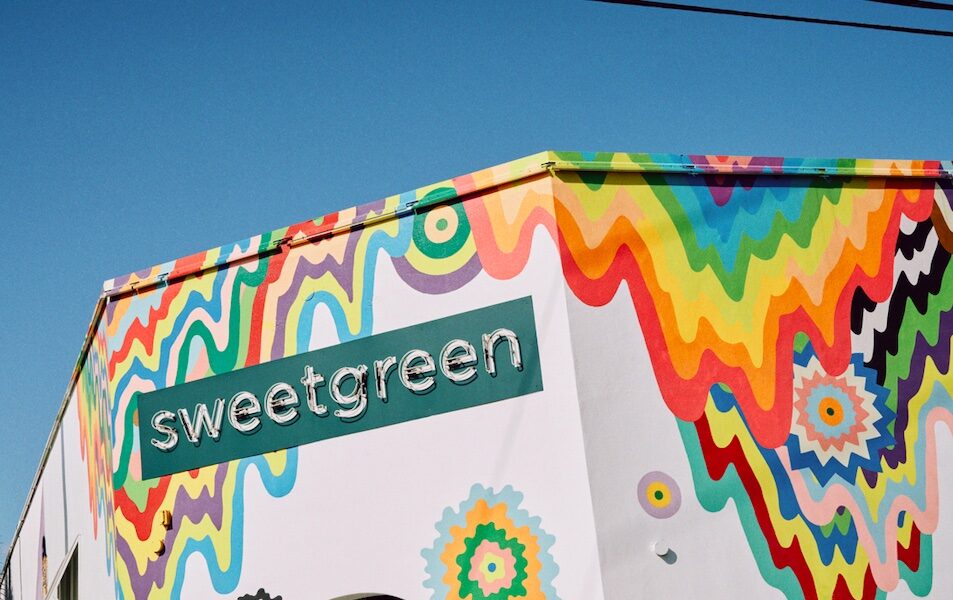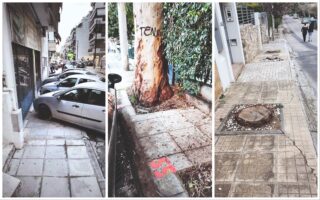As graffiti moves from eyesore to amenity, landlords try to cash In

Julian Phethean’s first canvas in London was a shed in his backyard where he covered the walls with bold lettering in spray paint. When he moved his art to the city’s streets in the 1980s, it was largely unwelcome – and he was even arrested a few times.
“We had nowhere to practice,” he said. “It was just seen as vandalism.”
These days, the canvases come to Phethean, better known as muralist Mr Cenz. Recent facades, which he shares with his sizable following, have included an abstract mural on a Tesla showroom and a portrait of Biggie Smalls, sponsored by Pepsi Max.
“I never would have envisioned that I’d be able to do it for a living,” he said.
Landlords wanting to attract young professionals once scrubbed off the rebellious scrawls. That was before graffiti moved from countercultural to mainstream. Now building owners are willing to pay for it.
From Berlin to London to Miami, the wider acceptance of graffiti has attracted developers looking to expand into trendy areas, companies wanting to relocate to hipper neighborhoods and brands seeking creative ways to advertise their products.
But that attention to once overlooked neighborhoods has pushed up rents, leaving artists, fans and local officials with a quandary: What happens after the street art that brought character becomes commodified?
Contemporary graffiti traces back to the anti-establishment expression of the 1960s and 1970s, when anyone with a can of spray paint could tag the sidewalks of Philadelphia and the subway cars of New York. In Soviet-era Berlin, protesters splattered the west side of the wall while the east side remained blank – until it fell in 1989, opening vast new canvases overnight.
The gallery world took note, but it was social media and the fame of artists like Banksy, Vhils and Lady Pink that propelled it to a wider audience. What followed was a movement that experts say has been reproduced from Australia to Argentina, as street art added to a neighborhood’s cultural cachet.
Take Shoreditch in east London as an example: Decades ago, developers deemed it a run-down industrial area. Still, it was a sanctuary for artists who made use of cheap rents to build a creative enclave.
“What artists bring is a sense of buzz: newness, creativity, trends,” said Rosie Haslem, managing director of Streetsense UK, a consulting agency. “Hipsters attract more hipsters who have more money and are able to start paying higher prices.”
That buzz also drew developers and companies that sought to leverage the popularity of Shoreditch. A former tea-packing plant now hosts a branch of the private members’ club Soho House. Down the road is Amazon’s largest corporate office in the region.
Spray painters still add political messages to the mosaic of artwork in east London. But they are nestled between more commercial interests: hand-painted campaigns sponsored by L’Oréal, Sky and Adidas, and street tours that treat the art as a tourist attraction.
Many campaigns are from agencies that act as middlemen between artists and the businesses interested in their work.
“We were splashing around in the water and a wave came,” said Lee Bofkin, a co-founder of Global Street Art, a London advertising agency. In the decade since its inception, it has grown to more than 30 employees, and Adidas, Moncler and Valentino have leased its walls.
Developers are responsible for a chunk of the 300 or so murals splattering Miami’s Wynwood neighborhood. The windowless walls of the former garment district had long appealed to graffiti artists, but one developer helped drive the 2009 opening of the Wynwood Walls, an open-air gallery visited by 3 million people each year.
“We had to find a carrot to try to bring investment into the area,” said Manny Gonzalez, the executive director of the Wynwood Business Improvement District. Street art, he said, was the lure. “We knew that we needed to keep the art.”
Five years ago, there were no office buildings in Wynwood. Now, tenants include Spotify, accounting firm PwC and the venture capitalist Founders Fund. Sony Music has leased office space there. And tech companies from San Francisco and New York are coming, Gonzalez said.
Those employees will need somewhere to live, and developers are betting they stay local. At the forefront is the Related Group, a developer that has built a “market rate” co-living apartment building with a rooftop pool and a distinctive mural by artist El Mac. Last year, Related broke ground on luxury condominiums, and it commissions artists to add visual flair to its buildings.
“Every lobby, every hallway, common space, public area of the building has art in it,” said Patricia Hanna, art director at Related. “The philosophy is to continue what Wynwood is.”
For investors, backing buildings in these districts is paying off. In Shoreditch, leasing a prime workspace cost about $90 per square foot in the last quarter of 2023, according to CBRE, 112% higher than the same quarter in 2008. Rents in the City of London financial district increased 40% in the same period.
The asking price for office leases in Wynwood was about $80 per square foot in the fourth quarter of 2023, 83% higher than the average in Miami-Dade County, according to Colliers.
The east side of the Berlin Wall in Friedrichshain is now an open-air gallery, and the average rent in the area has doubled in the past 10 years, higher growth than in neighboring districts, according to Savills.
Developers have tried to bring that artistic buzz to other neighborhoods: One popular exhibit, The Haus, was hosted in a former bank by a developer, Pandion, which later replaced the old building with sleek condominiums. All of them have sold.
A large outdoor facade could cost six figures, said Charlotte Specht, a co-founder of Basa Studio, an agency in Berlin that has helped street artists collaborate with brands like Maybelline and Netflix. Brands eager for campaigns have a demographic in mind for their target customers: “They use Uber, they have an Apple Mac, they get their latte to go, they travel,” Specht said.
Street art had acted as “a powerful engine” to turn some neighborhoods into economic and cultural centers, said Thomas Zabel, managing director of Savills Germany. “Everybody wants to live there.”
But officials are wondering how to regulate street art, and whether the commercialization changes a neighborhood’s identity.
In Lisbon, Portugal, a municipal body called the Urban Art Gallery presides over new creations, resulting in a visual feast: Street art is splashed on walkways and train stations, and officials have pushed street art festivals and tours to beautify the city’s rougher neighborhoods. International students, digital nomads and foreign investors have rushed in.
Researchers say Lisbon has successfully used that art to brand itself as a hip destination. But its revival is divisive for the city’s less privileged, who argue that they have been pushed out of their homes.
In Wynwood, property owners promise that they intend to preserve the neighborhood’s artistic heritage. New buildings must include some art on their facades, and hand-painted advertisements are illegal.
But those regulations, some say, have led to diminishing organic spaces for artists, who cannot make the most of sponsored opportunities. “The developers become gatekeepers to some extent as to what the public gets to see,” said Allison Freidin, a co-founder of Miami’s Museum of Graffiti. “And you hope that the developers make a great decision.”
A harder-to-quantify cost is the displacement of residents who can no longer afford to live there.
“It’s really seen as a success story: Oh, look how art transformed this desolate area of a wasteland into this beautiful successful hipster area with restaurants and tourists,” said Rafael Schacter, an anthropologist at University College London. The art, he believes, has been complicit in erasing communities for not being “the right kind of people.”
Residents have pushed back. In Kreuzberg, a cultural haven near Berlin’s old wall, residents criticized the opening of a Google tech incubator, which eventually moved elsewhere. Artists there have painted over their own murals to protest gentrification and voiced concerns over sponsored content’s replacing public art. In Los Angeles, graffiti artists risked trespassing charges to slather an abandoned luxury tower, which in turn has boosted curiosity toward it.
Aware of the tensions, businesses have started charitable arms that their commercial projects help fund. Some, including London’s Global Street Art, paint murals in local neighborhoods. Others, such as Basa Studio, say they want to help artists get paid fairly for their contributions.
But places like Shoreditch have already lost their edge as they have turned mainstream, said Haslem of Streetsense, the consulting agency. “The risk in commodifying or commercializing some of this graffiti is you end up sanitizing it,” she said.
“It’s a double-edged sword,” Dean Stockton, who has painted for years under the name D*Face. He was disconcerted by the number of tourists on buses who stared as he worked on a recent Wynwood mural with the words “I WANT TO LEAVE.”
“If you are going to dance with the devil,” he said, “make sure you are getting paid handsomely.”
This article originally appeared in The New York Times.






